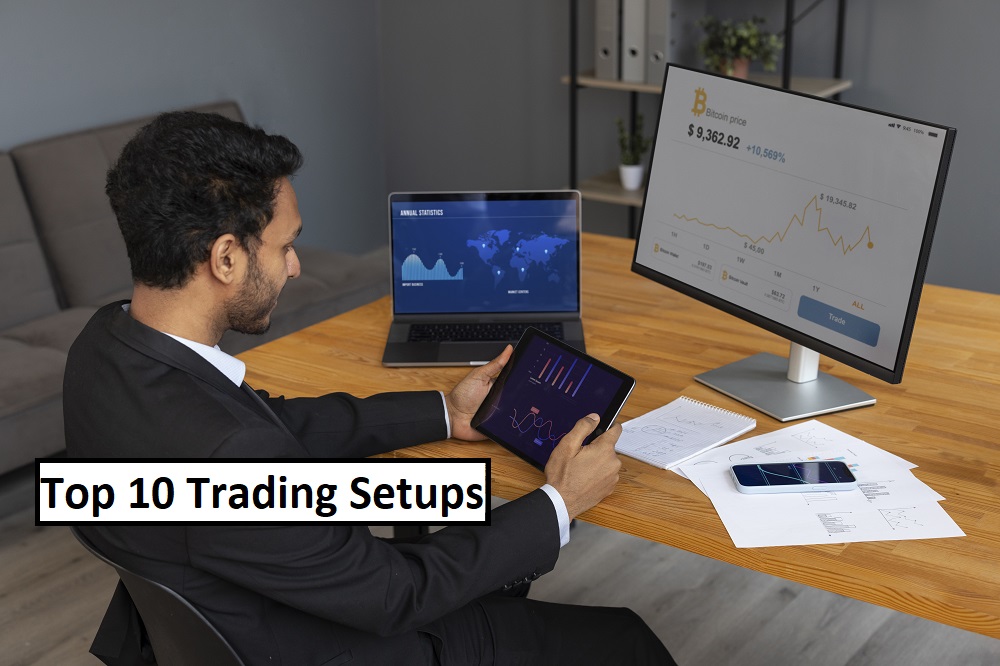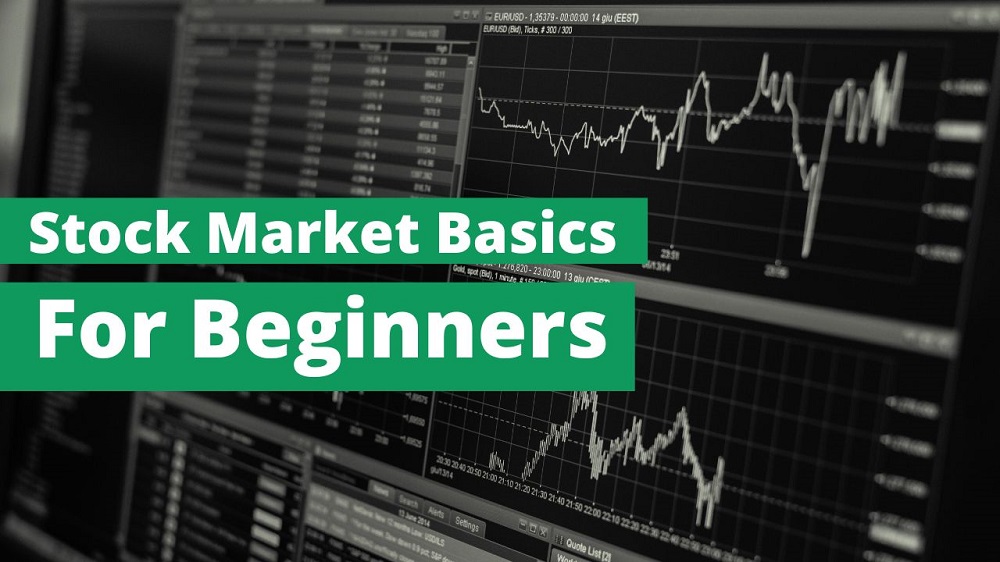In the trading world, having a clear plan or setup is very important. A trading setup is a specific combination of market conditions and technical indicators that guide traders on when to buy or sell. In this detailed guide, we will explore the top 10 trading setups that can help you make better decisions and improve your chances of success in the market. Whether you are new to trading or have been trading for a while, understanding these setups can enhance your trading strategy.
The Moving Average Crossover Setup
The moving average crossover setup is one of the most popular and widely used trading setups. It involves using two moving averages: one short-term and one long-term. The basic idea is to buy when the short-term moving average crosses above the long-term moving average and sell when it crosses below.
How It Works
- Buy Signal: When the short-term moving average crosses above the long-term moving average, it indicates a potential upward trend.
- Sell Signal: When the short-term moving average crosses below the long-term moving average, it signals a potential downward trend.
Why It Works
This setup works because moving averages smooth out price data and help identify the overall trend. When the short-term average moves above the long-term average, it suggests that recent prices are higher than older prices, indicating bullish momentum. Conversely, when the short-term average moves below the long-term average, it suggests that recent prices are lower than older prices, indicating bearish momentum.
The Support and Resistance Setup
Support and resistance levels are key concepts in technical analysis. Support is a price level where a downtrend can be expected to pause due to a concentration of demand. Resistance is a price level where an uptrend can pause due to a concentration of supply.
How It Works
- Support Level: When the price approaches a support level, it often bounces back up.
- Resistance Level: When the price approaches a resistance level, it often falls back down.
Why It Works
These levels work because they represent psychological barriers where traders have historically shown interest in buying or selling. By identifying these levels, traders can predict potential price movements and make informed trading decisions. For example, if the price of a stock has repeatedly bounced off a certain level, that level is considered support, and traders might look to buy around that price.
The Breakout Setup
A breakout occurs when the price moves outside a defined support or resistance level with increased volume. This setup is used to trade the beginning of a new trend.
How It Works
- Entry Point: Buy when the price breaks above resistance with high volume or sell when it breaks below support with high volume.
- Confirmation: Ensure that the breakout is confirmed by high trading volume.
Why It Works
Breakouts work because they indicate a shift in supply and demand. A breakout above resistance shows that buyers have gained control, while a breakout below support shows that sellers have gained control. This setup can lead to significant price movements as it often marks the beginning of a new trend.
The Reversal Setup
The reversal setup aims to identify points where the current trend is likely to reverse. This setup often uses candlestick patterns, such as the Hammer, Doji, or Engulfing patterns, to signal a potential reversal.
How It Works
- Bullish Reversal: Look for bullish reversal patterns at the end of a downtrend.
- Bearish Reversal: Look for bearish reversal patterns at the end of an uptrend.
Why It Works
Reversal setups work because they signal a change in market sentiment. For instance, a hammer pattern at the end of a downtrend suggests that sellers are losing control and buyers are stepping in. Recognizing these patterns can help traders enter trades at the beginning of a new trend.

The Pullback Setup
A pullback is a temporary pause or dip in the prevailing trend. This setup involves entering the market in the direction of the trend after a brief retracement.
How It Works
- Identify the Trend: Confirm the direction of the prevailing trend.
- Wait for Retracement: Wait for the price to pull back to a key level (e.g., moving average, Fibonacci level).
- Enter Position: Enter the trade in the direction of the trend after the pullback.
Why It Works
Pullbacks work because they offer traders an opportunity to enter the market at a better price. By waiting for a retracement, traders can reduce risk and increase potential reward. For example, in an uptrend, waiting for a pullback allows traders to buy at a lower price before the trend resumes.
The Range Trading Setup
Range trading involves identifying horizontal price channels where the price bounces between a defined support and resistance level. Traders buy at the support level and sell at the resistance level.
How It Works
- Identify Range: Determine the support and resistance levels that define the range.
- Enter Position: Buy at support and sell at resistance. Alternatively, short-sell at resistance and cover at support.
Why It Works
Range trading works because it takes advantage of predictable price movements within a range. By identifying the boundaries of the range, traders can make profitable trades without predicting the direction of the breakout. This setup is particularly useful in markets that are not trending strongly in either direction.
The Trend Following Setup
Trend following setups involve trading in the direction of the current trend. This can be done using various indicators, such as moving averages, trendlines, or the Average Directional Index (ADX).
How It Works
- Identify Trend: Use indicators like moving averages or ADX to determine the trend direction.
- Enter Position: Enter trades in the direction of the trend (buy in an uptrend, sell in a downtrend).
Why It Works
Trend following works because it capitalizes on the momentum of the market. Trends can persist for long periods, and trading in the direction of the trend increases the likelihood of successful trades. For example, if a stock has been rising steadily, buying and holding can be profitable as long as the uptrend continues.
The Momentum Setup
Momentum trading involves buying securities that have shown an upward price movement or selling securities that have shown a downward price movement. This setup relies on the idea that securities that have performed well in the past will continue to perform well in the short term.
How It Works
- Identify Momentum: Use indicators like the Relative Strength Index (RSI) or Moving Average Convergence Divergence (MACD) to gauge momentum.
- Enter Position: Buy when momentum indicators show bullish signals and sell when they show bearish signals.
Why It Works
Momentum trading works because it leverages the continuation of existing price trends. By trading in the direction of momentum, traders can take advantage of the prevailing market sentiment. For instance, a stock that has been gaining strength may continue to do so, providing profitable opportunities for momentum traders.
Top 10 Trading Setups PDF
The Gap Trading Setup
Gap trading involves taking advantage of price gaps that occur when a security’s price moves sharply up or down with little or no trading in between. These gaps can occur due to news, earnings reports, or other significant events.
How It Works
- Identify Gap: Look for significant gaps up or down in the price chart.
- Enter Position: Trade in the direction of the gap (buy on a gap up, sell on a gap down) or trade the gap fill (if you believe the gap will close).
Why It Works
Gaps work because they represent significant changes in market sentiment. By understanding the cause and likely continuation of the gap, traders can capitalize on these price movements. For example, a positive earnings report might cause a stock to gap up, signaling strong buying interest.
The News-Based Setup
News-based trading setups involve making trading decisions based on significant news events. This can include economic reports, earnings announcements, geopolitical events, or other market-moving news.
How It Works
- Monitor News: Stay updated with economic calendars, earnings reports, and news sources.
- Analyze Impact: Assess the potential impact of the news on the market.
- Enter Position: Trade based on the anticipated market reaction to the news.
Why It Works
News-based trading works because significant news can drastically impact market prices. By reacting quickly to news events, traders can take advantage of the resulting price movements. For example, a major geopolitical event might cause significant volatility, creating trading opportunities.
Conclusion
Incorporating these setups into your trading routine will provide a structured approach to analyzing the markets. Consistent practice and evaluation of each setup will help you understand which ones align best with your trading style and objectives. The key is to remain patient and disciplined, avoiding emotional decisions and sticking to your predefined trading plan. With time and experience, these setups can become powerful tools in your trading arsenal.
Also Read:




